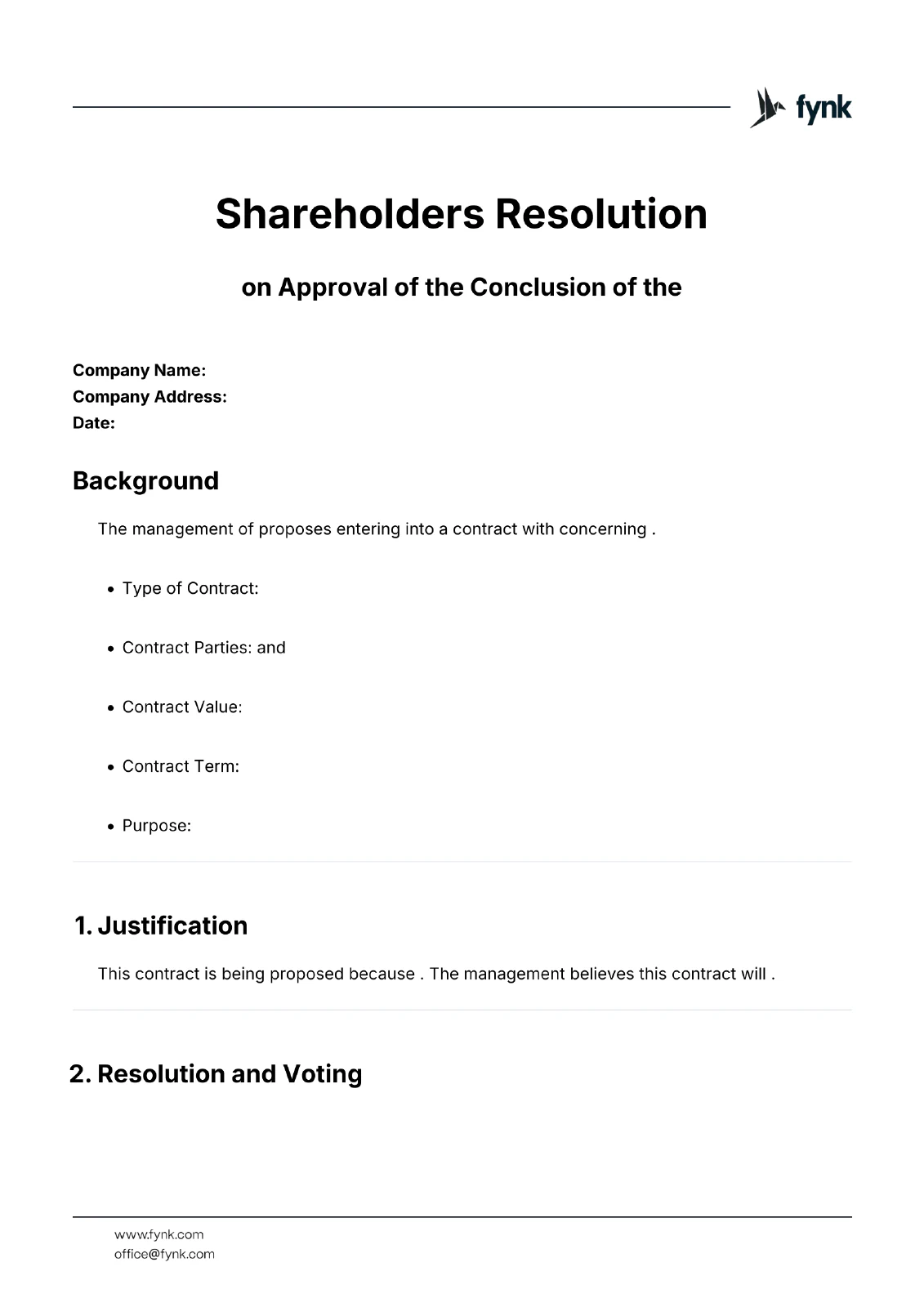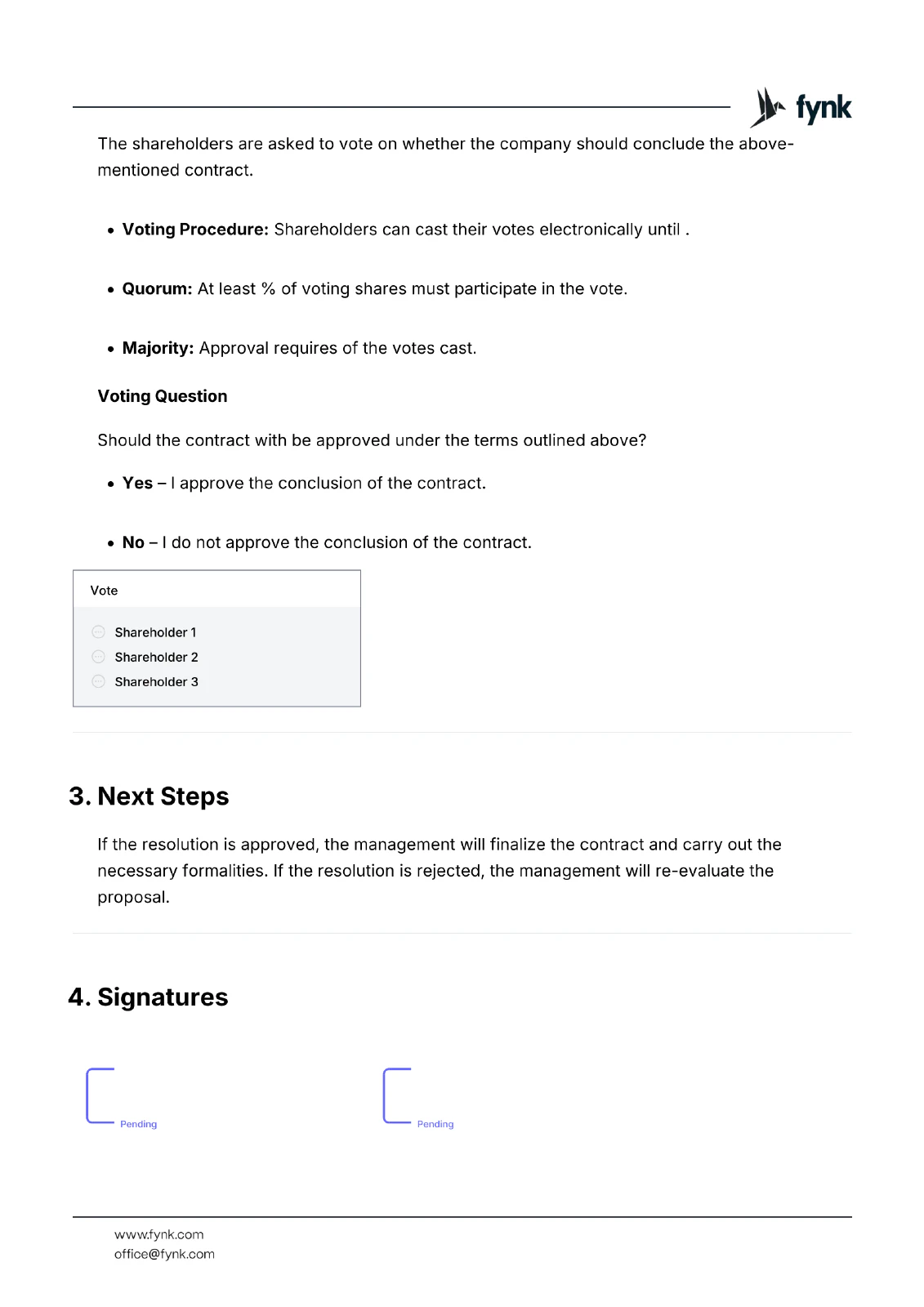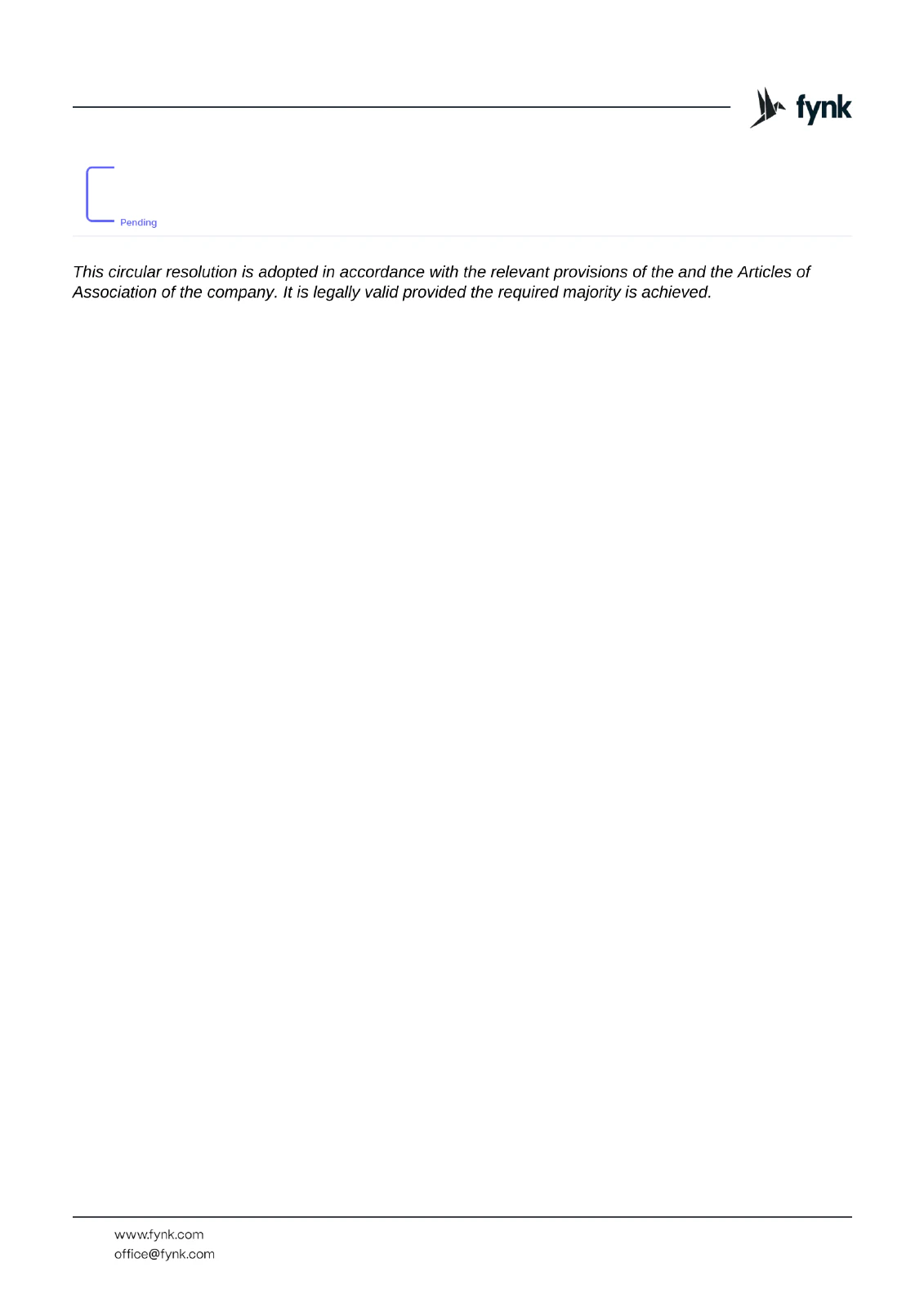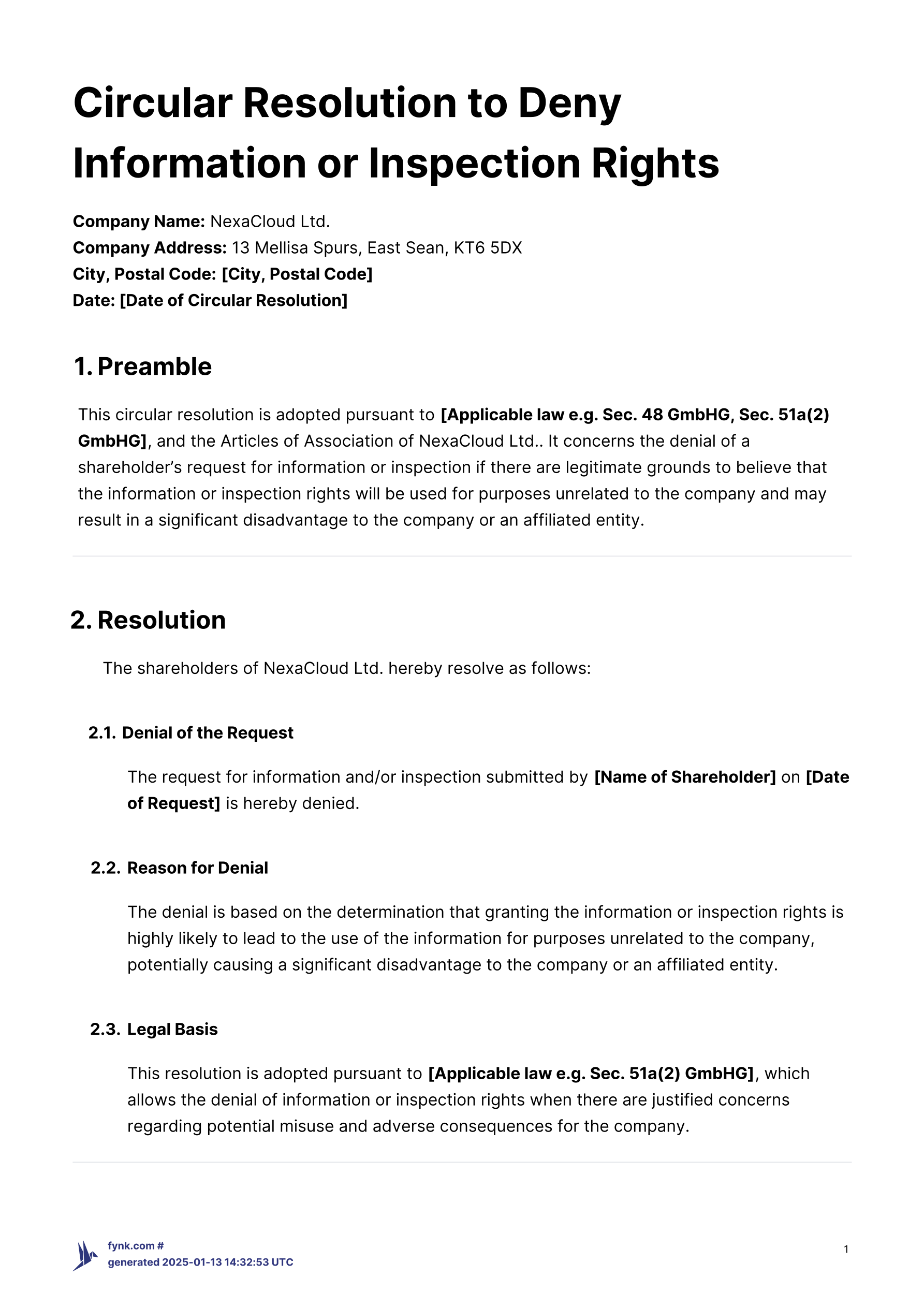Learn everything there is about circular resolution for contract approval. What they are, when to use them for and what they should contain.
What Is Circular Resolution for the Conclusion of a Contract?
A circular resolution for the conclusion of a contract is a concise document—usually formatted in one page—that covers the stakeholders’s decision about a specific type of contract. When a company faces an unusual or controversial contract, board members can easily decide how to proceed with it by putting it into a vote.
But what do we mean by “unusual” contracts?
Depending on the nature of your business, the definition of an unusual contract might be different, but they share two common features. First, these contracts are important enough to require the formal approval of a company’s decision-makers. Second, they need to be dealt with quickly. Here are some examples of these unusual contracts:
- High-Value Partnership Agreements
- Urgent Supplier Contracts
- Exclusive Licensing Deals
- Unexpected Real Estate Leases
- Acquisition or Merger Agreements
Using a circular resolution method to deal with these contracts is a perfect solution to handle them efficiently, without wasting time or losing opportunities due to paperwork.
Why Do You Need a Circular Resolution for the Conclusion of a Contract?
The main reason you need a circular resolution is simple: speed. Sometimes, waiting for a full board meeting just isn’t practical—especially when a deal or contract needs your attention now. For example, you could be looking at an exclusive deal with a major client, and the terms need to be approved before a competitor beats you to it. With a circular resolution, everyone involved can approve the contract remotely, speeding up the entire process.
This is especially helpful when you’re working with contracts that need swift approval but are tricky, like international deals where time zones and differing schedules might otherwise hold up decision-making.
Legal Frameworks About Circular Resolution for the Conclusion of a Contract
What does the law say about circular resolutions and the decisions of the board for the contracts?
According to § 48 of GmbHG (Germany) and § 34 GmbHG (Austria), shareholder resolutions typically need to be approved at meetings. However, the law allows resolutions to be passed without a meeting if all shareholders unanimously agree in writing or cast their votes in writing.
Moreover, § 49 (2) of GmbHG on convening the meeting states that:
“In addition to the cases expressly provided for, it shall be convened whenever it appears necessary in the interests of the company.”
This section emphasizes the necessity of holding a meeting, especially in time-sensitive or exceptional circumstances.
Template for Circular Resolution for the Conclusion of a Contract
Need to settle a contract-related matter quickly? Our “Umlaufbeschluss - Abschluss eines Vertrages” template is here to make your life easier when it comes to approving important contracts. Instead of getting everyone together in a room, you can use this template to get approvals quickly and efficiently, all in writing. It covers everything you need, from the background of the contract to the voting process, so nothing gets overlooked.
Why should you use this circular resolution template on fynk?
- Save Time: Get approvals without waiting for a meeting.
- Be Compliant: Make sure you’re following all the legal rules.
- Simplify Voting: Let shareholders easily vote and sign electronically.
- Keep Things Clear: Give everyone a full picture of the contract to make informed decisions.
Give it a try!
Can You Use Circular Resolution for Other Matters?
Yes! Depending on the applicable laws and the article of association, you can use the circular resolution method for a wide range of decisions, including:
- Resolution on appointing or dismissing a managing director
- Dissolution of a company
- Sale of assets of a company
- Acquiring assets for a company
- Decisions on appointing the liquidators
Shareholder 1
Shareholder 2
Shareholder 3








